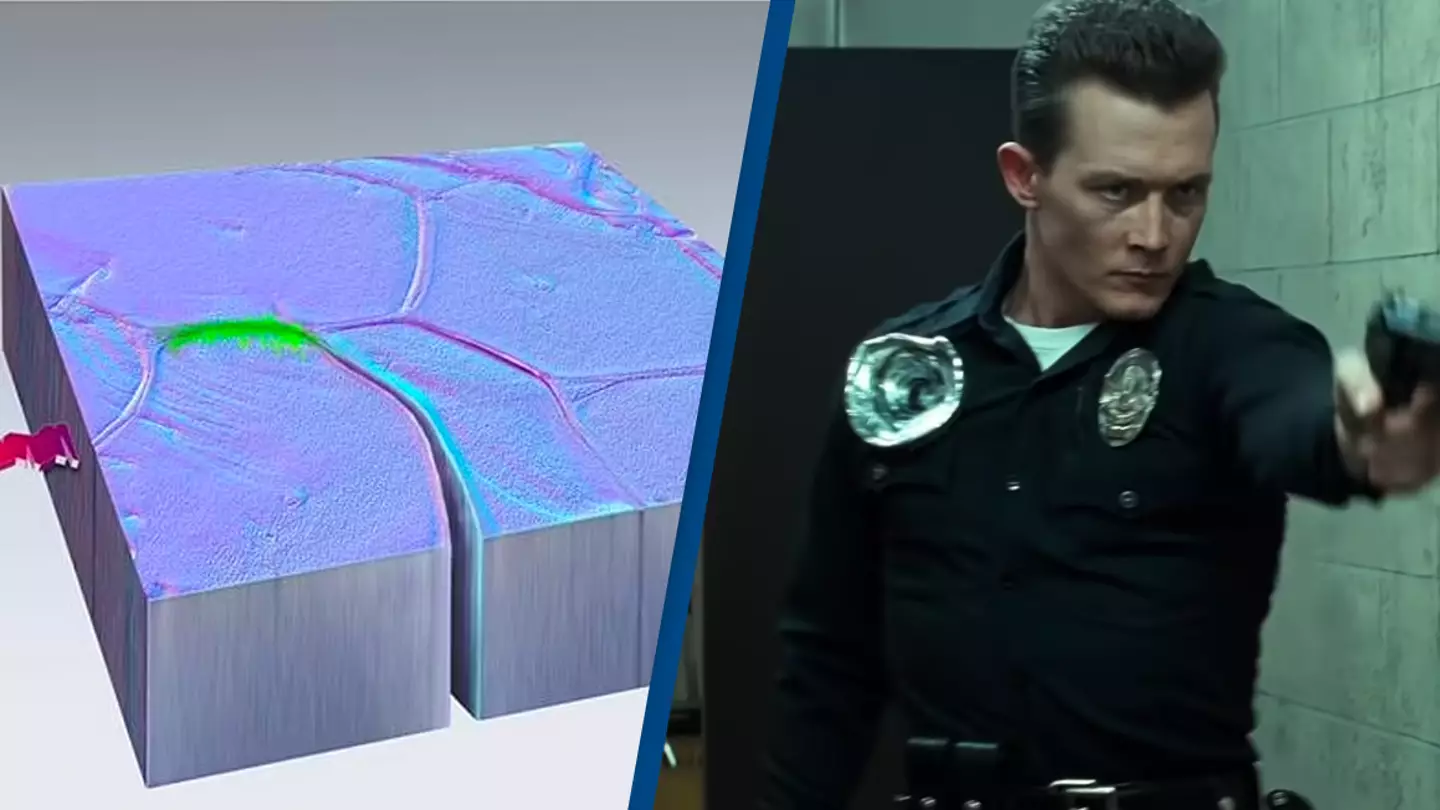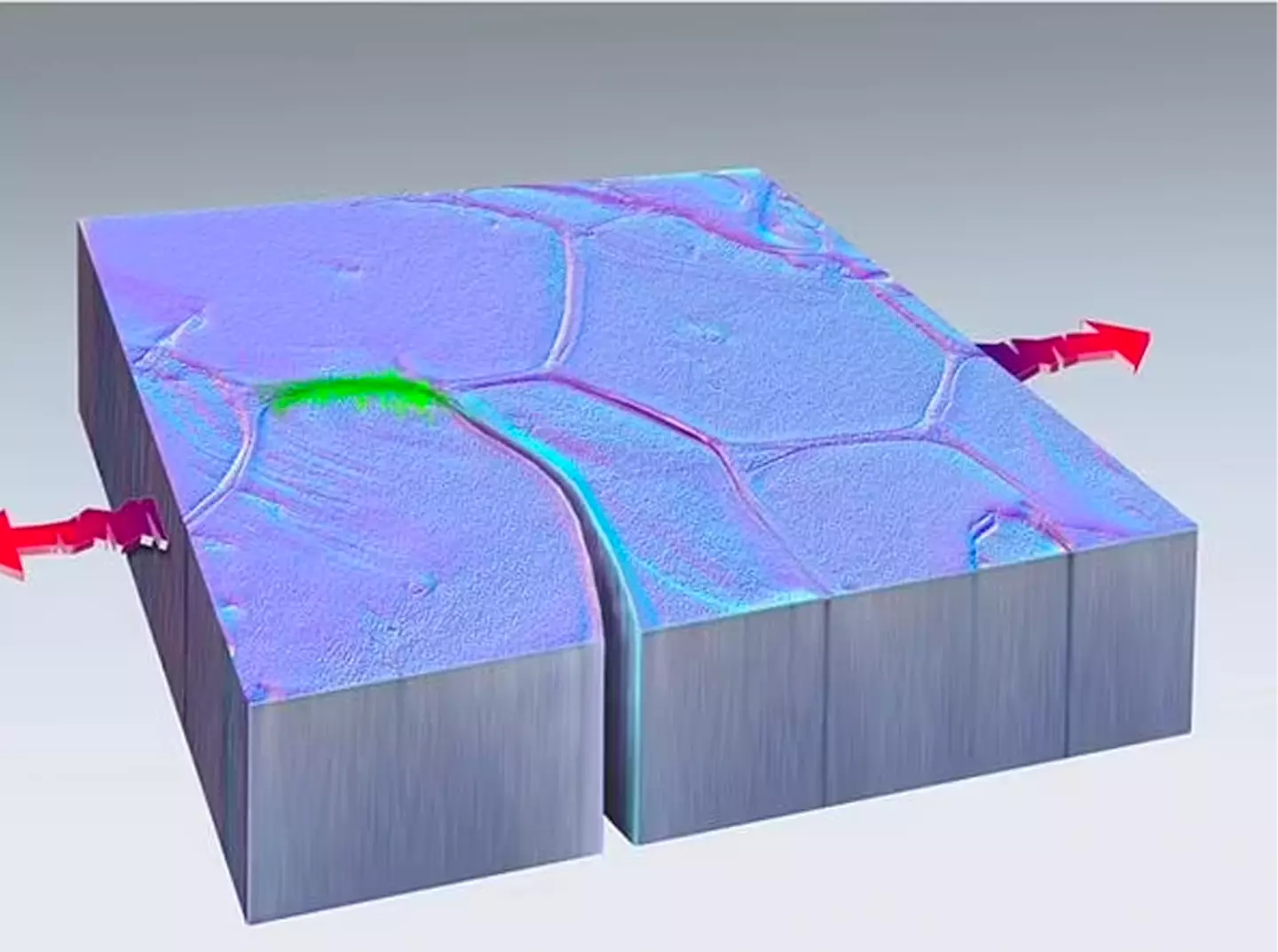
Indestructible robots have taken one step closer to becoming a reality.
If you cast your mind back to the 1991 film Terminator 2: Judgment Day, you'll remember a certain malevolent time-travelling and shape-shifting android called T-1000 who was made of liquid metal.
When T-1000 was hit with bullets, the metal would just heal itself.
Advert
Yep, that guy.

Apparently scientists have just witnessed 'self-healing metal' for the first time and while it wasn't in the form of a shape-shifting android, it could represent a huge step forward in engineering.
According to a US study published in the journal Nature, cracks from wear and tear in metal can actually heal themselves in the right conditions.
Advert
In the experiments at the Sandia National Laboratories in New Mexico, the researchers used a technique that pulled on the ends of tiny metal pieces about 200 times per second. While a crack initially formed and spread, about 40 minutes into the experiment, the metal fused back together.
The researchers have called this self healing process 'cold welding'.
"The cold welding process is a metallurgical process that is known to occur when two relatively smooth and clean surfaces of metal are brought together to reform atomic bonds," explained Sandia National Laboratories materials scientist Brad Boyce.

Boyce added: "Unlike the self-healing robots in the Terminator movie, this process is not visible at the human scale. It occurs at the nanoscale, and we have yet to be able to control the process."
Advert
While the self-healing process has only occurred in tiny pieces of metal so far, the researchers believe it could be applied more widely in the future.
"It's possible to envisage materials tailored to take advantage of this behavior," Boyce said.
"Given this new knowledge, there may be alternative material design strategies or engineering approaches that could be devised to help mitigate fatigue failure. In addition, this new understanding may shed light on fatigue failure in existing structures - improving our ability to interpret and predict such failures."
Fatigue failure is one way machines eventually wear out and break. Repeated stress or motion causes microscopic cracks to form and over time these cracks spread and the machine eventually breaks.
Advert
So we're not going to be chased around by a T-1000 anytime soon but we could be in the future?
Good to know.
Topics: News, World News, Science, Technology
